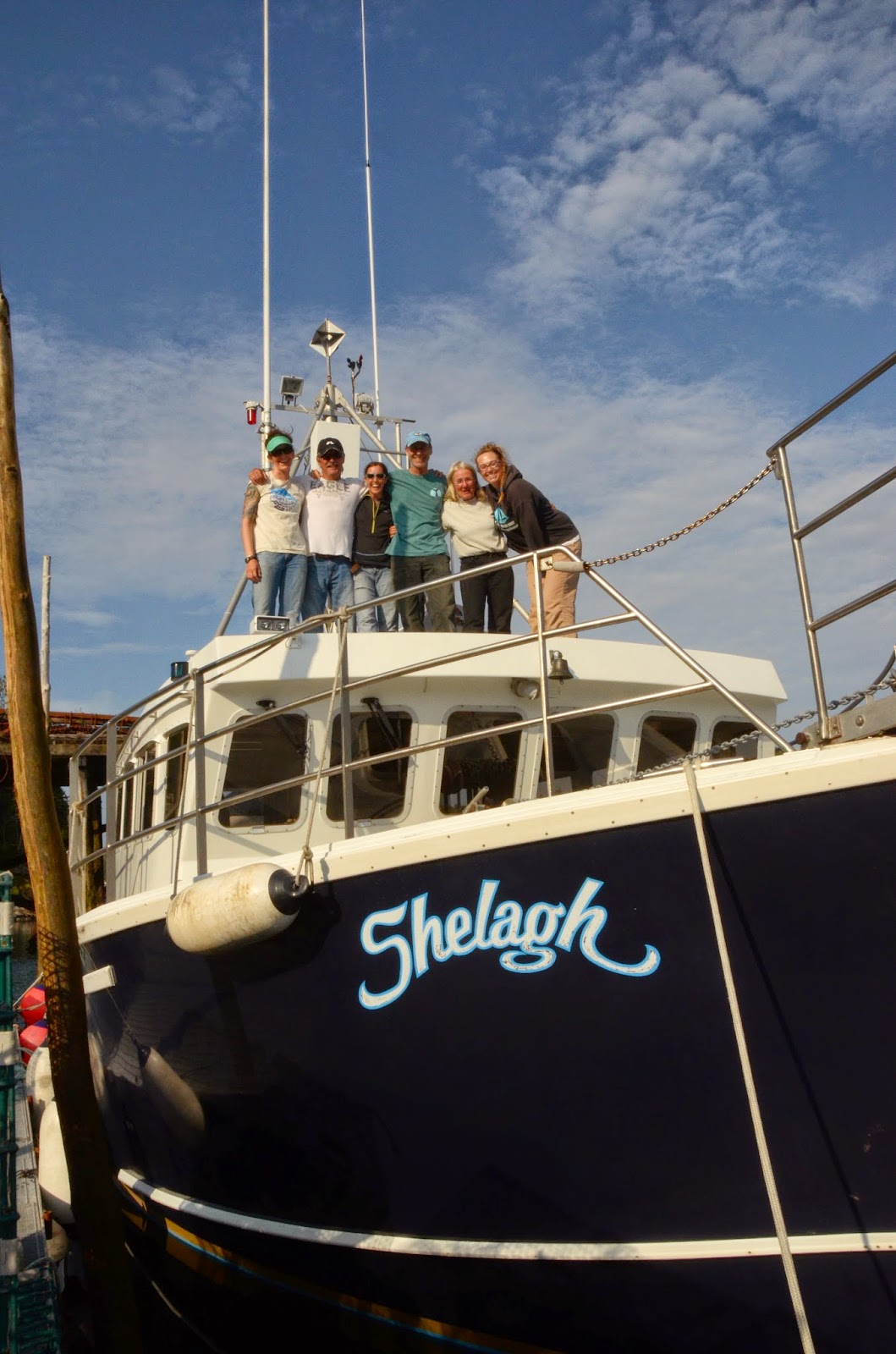White-sided dolphins being very active. Photo: Marianna Hagbloom
To determine species and estimate the group size (and to have some fun!), we decided to get a closer look. These were Atlantic white-sided dolphins, and we estimated this pod was composed of 400 individuals!
A great look at the identifying markings of a white-sided dolphin. Photo: Monica Zani
We were amused by their huge leaps out of the water and by the flurry of activity that would occur when chasing fish. We also caught glimpses of several mothers with calves, which evoked some "awww!"s from our otherwise very professional observers.
Not too long after continuing on our trackline, the observers on the bow called back that they were seeing something that looked like a lobe of a right whale fluke sticking out of the water. As soon as we got a better look through our binoculars, we realized we were looking at an orca! For many of us, this was the first time we'd ever seen an orca in the Bay of Fundy, and for some of us, this was our first orca sighting ever, so you can imagine the excitement on the Nereid!
Surfacing! Photo: Johanna Anderson
We stayed with the orca for a few dive cycles, and got close enough to get some great photographs of his remarkably tall dorsal fin. We used the images to compare this orca with the orca that was seen by our team in the Bay of Fundy in 2012- and it turns out that this is the same whale, fondly known to our team as "Old Thom." Although this killer whale had been seen in 2012, sightings of this species in the Bay of Fundy are very rare- CBC News even chose to write an article about it!
Our "Old Thom" was seen in the Bay of Fundy in 2012. Photo: Johanna Anderson
Rounding out our survey day was a sighting of a trio of humpback whales. One of the humpbacks was "Foggy," who was disentangled from fishing gear by the Campobello Whale Rescue Team last September. It was wonderful to see this whale survived the incident and had returned to the Bay of Fundy.
Foggy at the surface. Photo: Kari Signor
- Marianna


































